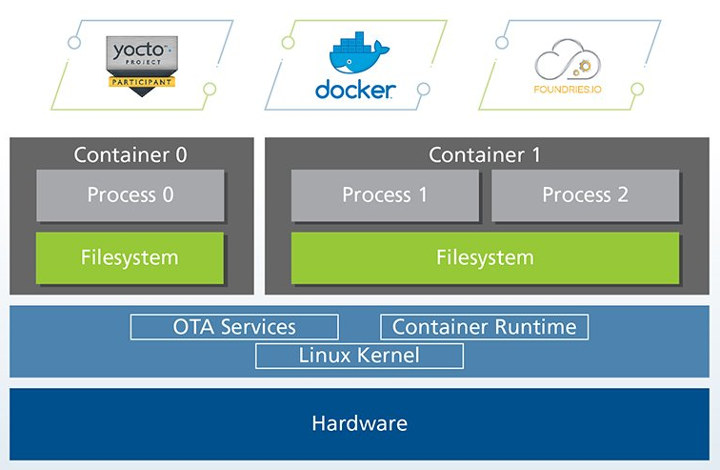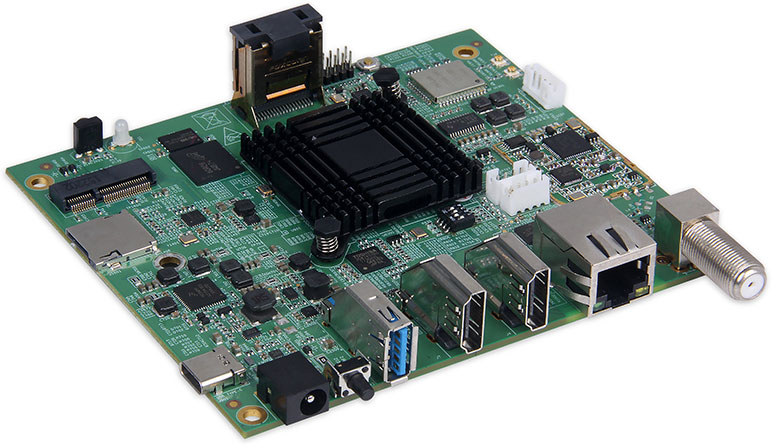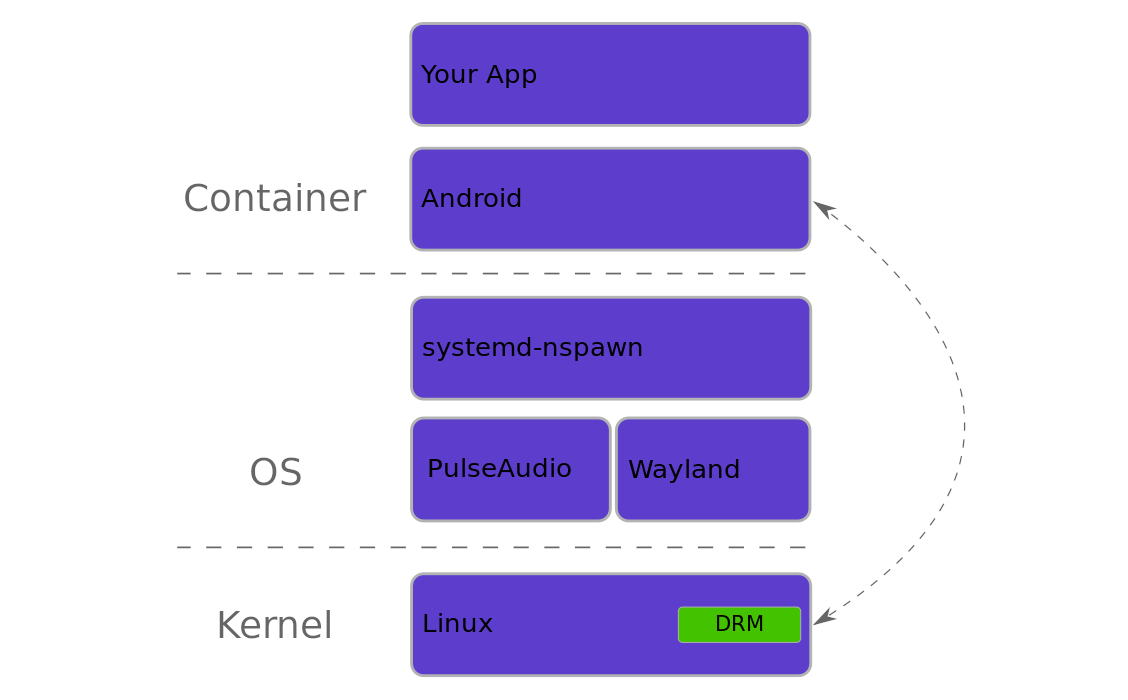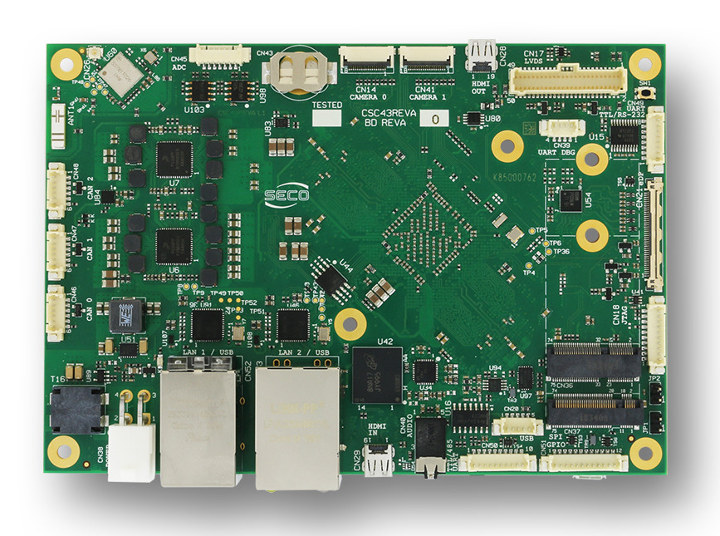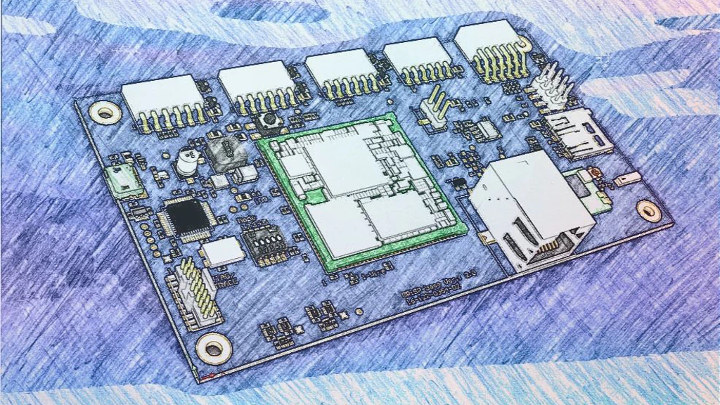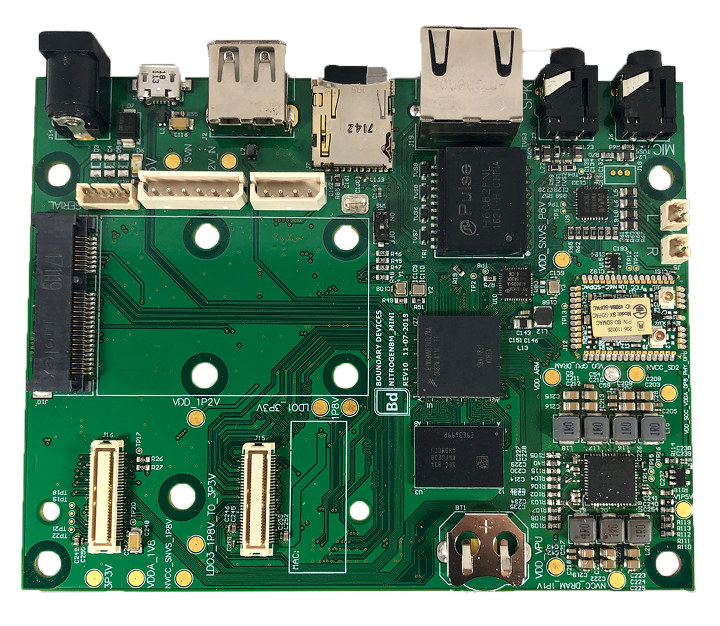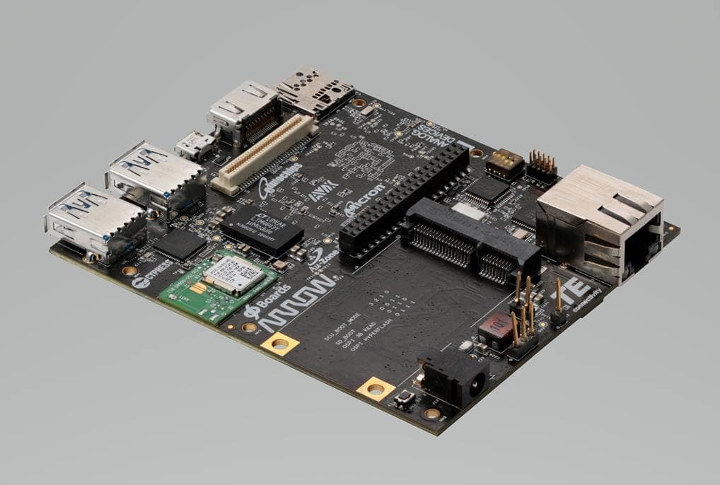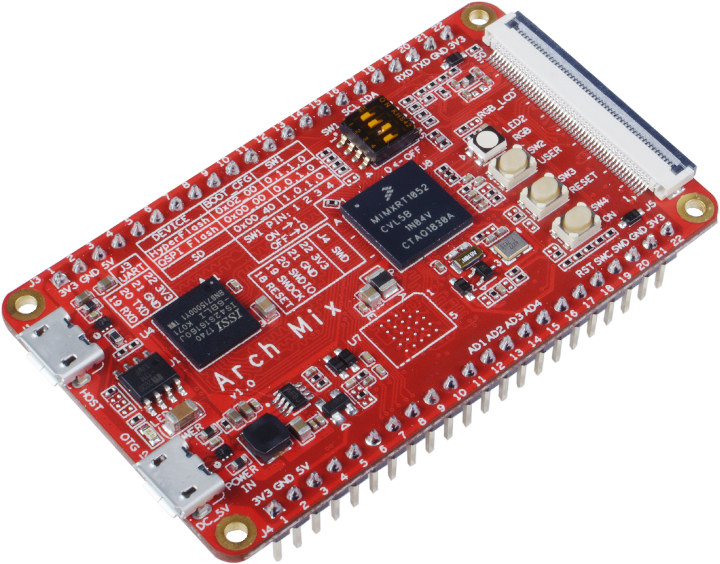When we interviewed Toradex right before Embedded World 2019, they told us they would focus on their new software offering called Torizon, an easy-to-use industrial Linux Platform, especially targeting customers are coming from the Windows / WinCE environment or who have only experience with application development and are not embedded Linux specialists. The company has now officially launched Torizon, and provided more details about their industrial open source software solution especially optimized for their NXP i.MX modules. Torizon specifically relies on foundries.io Linux microPlatform which provides full system with a recent stable kernel, a minimal base system built with OpenEmbedded/Yocto, and a runtime to deploy applications and services in Docker containers. The microPlatform is part of TorizonCore (light blue section above) that also includes an OTA client (Aktualizr). TorizonCore is free open-source software, and serves as the base to run software containers. To get started, Torizon provides a Debian container […]
Geniatech APC810 SBC Supports HDMI Output & Input, ATSC TV Tuner
Geniatech APC810 is yet another single board computer based on NXP i.MX 8M processor. The board comes with 3GB RAM, 16GB flash, Gigabit Ethernet, 802.11ac WiFi, HDMI 2.0 output as well as common interfaces or features such as HDMI 1.4 input, and an optional ATSC tuner. Geniatech APC810 specifications: SoC – NXP i.MX 8M quad core Cortex A53 processor @ 1.5GHz. Cortex-M4 real-time core, Vivante GC7000 GPU with support for OpenGL/ES 3.1, OpenGL 3.0, Open CL 1.2 System Memory – 3GB LPDDR4 Storage – 16GB eMMC flash (option:8GB/32GB), microSD Slot up to 64GB, M.2 socket for SATA Video I/O HDMI 2.0 output up to 4K @ 60 Hz HDMI 1.4a input MIPI DSI interface for LCD/AMOLED displays up to 1920×1080 resolution Video Playback – H.265 & VP9 up to 4K @ 60 fps, H.264 up to 4K @ 30 fps, MPEG-4/2 up to 1080p60, etc… Audio – Via HDMI, 4-pin […]
SPURV Runs Android Apps in Linux over Wayland
We’ve previously seen it was possible to run Android apps natively inside Linux thanks to Anbox that leverages the Linux kernel in Ubuntu for better integration and performance, and uses an LXC container to run Android operating system. Collabora now offers a different solution with SPURV that runs the full Android OS, including a separate Linux kernel, in its own container and works over Wayland thanks to a graphics bridge from Android to Wayland. Four main components are part of the implementation: Android target device – This component integrates SPURV into Android by using the device infrastructure that the Android codebase provides, and the company specifically the target runs inside of a systemd-nspawn container. SPURV Audio – Bridges the Android Audio Hardware Abtraction Layer (HAL) to the host PulseAudio stack. SPURV HWComposer – Integrates Android windows into Wayland by implementing a HWC-to-Wayland bridge, where HWC is the Android API for […]
Seco SBC-C43 SBC Features NXP i.MX 8 QuadMax Processor, 8GB RAM
When NXP unveiled their first 64-bit i.MX processors in 2016, we had three families: i.MX 8 Cortex-A72/A53 for high performance, i.MX 8M Cortex-A53 for audio/video application, and i.MX 8X Cortex-A53 for low power applications. Most of the designs we’ve seen so far are based on i.MX 8M family, and we’ve seen few hardware platforms based on the top of the line i.MX 8 QuadMax SoC with two Arm Cortex-A72 cores, four Cortex-A53 cores, two Cortex-M4F real-time cores, and two GC7000XS/VX GPUs. We did cover several modules based on i.MX 8 QuadMax processor including Advantech ROM-7720 Qseven 2.1 Computer-on-Module, Toradex Apalis i.MX 8 CoM, and Congatec conga-SMX8 SMARC 2.0 SoM among others, but AFAICR I had yet to see an i.MX 8 QuadMax single board computer. So Seco SBC-C43 appears to be the first SBC powered by NXP’s most powerful i.MX 8 processor, coupled with up to 8GB DDR4, 32GB eMMC […]
GRiSP 2 Board Targets Embedded Erlang & Elixir Development (Crowdfunding)
Erlang is described as a programming language used to build massively scalable soft real-time systems with requirements on high availability, and used in telecoms, banking, e-commerce, computer telephony and instant messaging. Elixir is a dynamic, functional language designed for building scalable and maintainable applications that leverages the Erlang VM, known for running low-latency, distributed and fault-tolerant systems. Elixir is used in many types of applications from higher-level web development to the embedded software domain, and Peer Stritzinger designed GRiSP board especially for the latter in 2017. He’s now back with GRiSP 2 featuring an NXP i.MX 6ULL SoM running Linux and RTEMS (Real-Time Executive for Multiprocessor Systems) RTOS. GRiSP 2 board is comprised of a system-on-module and baseboard with the following specifications: System on Module SoC – NXP iMX6UL Arm Cortex-A7 @ 696 MHz, 128 KB L2 cache, with TRNG, Crypto Engine (AES/TDES/SHA), Secure Boot Memory – 128 MB DDR3 […]
Nitrogen8M_Mini Single Board Computer Launched for $135 and Up
Last month we write about Nitrogen8M_Mini, the First NXP i.MX8 8M Mini SBC, but at the time, it was not available for purchase just yet. Boundary Devices has now announced the official release of the board and is taking orders / pre-orders for $135 and up. Nitrogen8M_Mini SBC Two versions are being offered either with the board only, or as part of a devkit with a 5V power supply, an 8GB microSD card with Linux OS, a battery, and serial console cable: Nit8MQ_Mini_2r8eWB with WiFi and Bluetooth, currently in stock, and sold for $155 (board only), or $175 (devkit) Nit8MQ_Mini_2r8e without wireless module, to ship in a few weeks, and sold for $135 (board only), or $155 (devkit) Nitrogen8M_Mini specifications: SoC – NXP i.MX 8M Mini with 4x Cortex A53 cores @ 1.5 to 2.0 GHz max, 1x Cortex-M4F real-time core, Vivante GCNanoUltra 3D GPU, Vivante GC320 2D GPU System […]
NXP i.MX 8X/8M based AI-ML and Thor96 Boards Target AI and IoT Applications,
We’ve already covered several 96boards platforms announced at Embedded World 2019, but we’re not quite done yet, as Arrow Electronics also introduced two NXP i.MX 8X/8M powered 96Boards CE Extended development boards with AI-ML board equipped with i.MX 8M quad core Arm Cortex-A35 processor coupled with 2GB RAM, an mPCIe slot for cellular connectivity, and Thor96 SBC featuring NXP i.MX 8M processor with 2GB RAM as well, but also two HDMI ports, a Thread and Zigbee module, and more. Arrow AI-ML Board AI-ML key features and specifications: SoC – NXP i.MX 8X quad core Arm A35 processor @ 1.2 GHz, Cortex-M4F real-time core @ 266 MHz, Tensilica HiFi 4 DSP Core, GC7000 Lite 3D GPU with 4x Vec4 Shaders with 16 Execution Units System Memory – 2 GB LPDDR4 @ 1,600 MHz Industrial Temp by Micron Storage – Micro SD card slot Video Output / Display Interface HDMI Output Dual […]
$30 Arch Mix Development Board Features NXP i.MX RT1052 Crossover Processor
NXP i.MX RT Arm Cortex-M7 crossover processors are supposed to fill the gap between microcontrollers and more powerful application processors thanks to real-time capabilities, and a higher CPU frequency. We’ve already covered several i.MX RT1050 series platforms including NXP’s own evaluation board and Forlinx OK1052-C development kit comprised of a carrier board and an i.MX RT1052 system-on-module. But if you’d like to experiment with NXP i.MX RT processor using a cheaper, smaller, and easier to purchase development platform, Seeed Studio has started to sell Arch Mix development board for $29.90 plus shipping. Arch Mix board specifications: SoC – NXP i.MX RT1052 Arm Cortex-M7 processor @ up to 528MHz System Memory – 32MB SDRAM Storage – Optional 64MB Hyperflash, 8MB QSPI flash, microSD card socket Display I/F – RGB LCD interface USB – 1x micro USB 2.0 host port, 1x USB OTG port for data and power Expansion Headers – 2x […]


